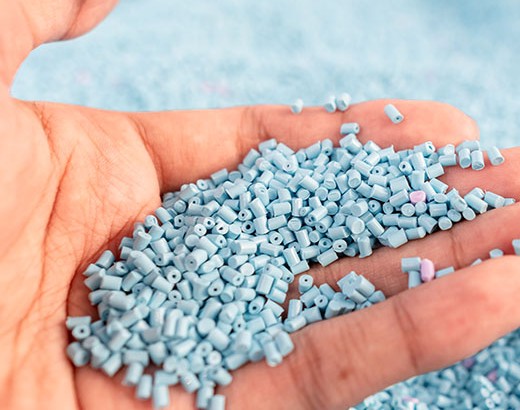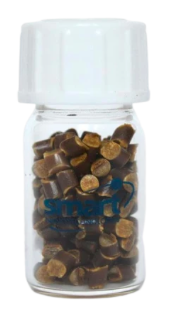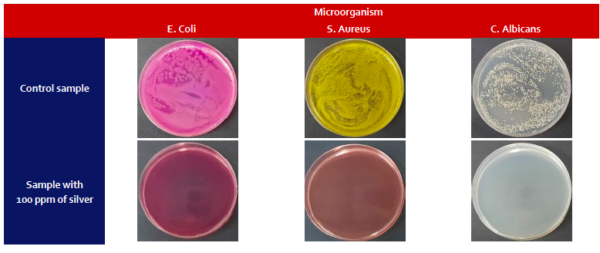Bactericidal Additives in Protection Solutions

A new line of bactericidal additives incorporating silver nanoparticles promises to keep surfaces clean and disinfected in medical, public, and domestic environments.
Smart Nanotechnologies is at the forefront of preventive solutions with its bactericidal additives. By incorporating silver nanoparticles, the aim is to keep polymer surfaces clean and microorganism-free across various sectors. Also, their goal is to prevent infections and continuously enhance hygiene.
You can also read: Antibacterial Polymers: Advancing in Public Health
99.99% Protection for Polymer Surfaces

Bactericidal polymer masterbatch with yellow-brown color. Courtesy of Smart Nanotechnologies.
Smart Nanotechnologies introduces POLYDEF, a line of polymer additives with fungicidal and bactericidal properties. POLYDEF uses silver nanoparticles with proven antimicrobial capabilities, offering long-term microbiological protection with an impressive 99.99% efficacy rate. It surpasses traditional biocides in stability under extreme temperatures and humidity, ensuring effectiveness across diverse applications. Moreover, POLYDEF is environmentally friendly, maintaining polymer properties without causing degradation.
Silver Nanoparticles in Action
Silver nanoparticles disrupt microorganisms’ metabolic processes by blocking essential protein production. Moreover, this biocidal effect works efficiently in the recommended dosage. Laboratory studies confirm a significant reduction in microorganisms on treated surfaces, demonstrating its efficacy.

The image displays the additives’ microbiological activity against E. coli (ATCC 8739) and S. aureus (ATCC 6538), representing gram-negative and gram-positive bacteria, respectively. It also shows the activity against C. albicans (ATCC 10231), a type of fungus. Courtesy of Smart Nanotechnologies.
Versatility Across Multiple Industries
POLYDEF additives are compatible with various thermoplastics, including LDPE, HDPE, PP, ABS, EVA, PET, and PMMA. Their versatility makes them valuable in many industries:
- Medicine: Reduces hospital infections and enhances safety.
- Sports: Improve hygiene on high-contact surfaces.
- Automotive and Aviation: Enhances cabin and vehicle hygiene.
- Education: Ensures safer environments in schools.
POLYDEF also finds use in innovative products like 3D printing filaments and self-leveling epoxy floor resins. It’s adaptability extends to flexible, rigid, and viscoelastic polyurethanes. These broad applications and bactericidal properties make it a preferred choice for industries prioritizing hygiene and material performance.
In summary, technologies like POLYDEF address bactericidal resistance by offering innovative solutions. They help maintain pathogen-free surfaces across industrial and everyday settings.
